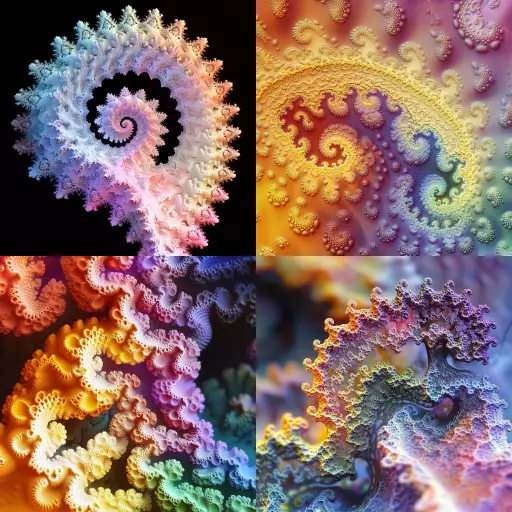Explore the Best AI Image Gallery

Pixels on Skin: AI Images and the Future of Design
The creative world is in a state of flux. Artificial intelligence (AI) has become a powerful force, capable of generating stunning visuals that blur the lines between human and machine creativity. This new technology, particularly in the realm of image generation, is poised to revolutionize the design industry, offering exciting possibilities while raising important ethical questions.
A New Palette for Designers
AI-powered image generators, fueled by vast datasets of existing images and code, can produce original artwork, design assets, and even interactive experiences. This opens up a world of possibilities for designers:
- Rapid Prototyping: Quickly generate multiple design iterations to explore different concepts and visual directions.
- Personalized Content: Create custom visuals tailored to individual user preferences or brand identities.
- Overcoming Creative Blocks: Serve as a source of inspiration and jumpstart the creative process.
- Democratization of Design: Empower individuals with limited design experience to create professional-looking visuals.
Beyond Static Images
AI image generation extends beyond static images. It can be used to create:
- Interactive Graphics and Animations: Bring designs to life with dynamic elements that respond to user input.
- Generative Art Installations: Produce evolving visual displays that adapt to their environment.
- Immersive Experiences: Generate realistic 3D models and environments for virtual reality (VR) and augmented reality (AR) applications.
Navigating the Ethical Landscape
The rise of AI image generation raises several ethical considerations:
- Copyright and Ownership: Who owns the rights to AI-generated images? How do we address issues of plagiarism and intellectual property?
- Bias and Representation: AI algorithms are trained on existing data, which can perpetuate biases and stereotypes. Its crucial to ensure that AI-generated content is inclusive and representative.
- Transparency and Accountability: The decision-making processes of AI models can be opaque. Its important to understand how AI images are created and who is responsible for their potential impact.
The Future of Design: A Collaborative Landscape
The future of design lies in a collaborative relationship between humans and AI. AI tools will augment the creative process, freeing designers to focus on higher-level tasks such as concept development, strategic thinking, and user experience.
Designers who embrace AI will be better equipped to navigate this evolving landscape. By understanding the capabilities and limitations of AI, fostering ethical practices, and cultivating a collaborative mindset, designers can harness the power of AI to create innovative, impactful, and meaningful experiences.
Key Considerations for Designers
- Stay Informed: Continuously learn about new AI tools and advancements in image generation.
- Experiment and Explore: Dont be afraid to try out different AI-powered platforms and techniques.
- Develop a Critical Eye: Evaluate the output of AI models critically, ensuring it aligns with your design vision and ethical standards.
- Embrace Collaboration: View AI as a partner in the creative process, not a replacement for human designers.




](https://images.ai-img.art/thumbnails/150/51c93500396faff4e7fa8b42bc68033067b16b2230e3496e95c482a581ff0fe9.webp)


![**Representation: A dog acting as a private tutor to a child. The dog holds a ruler in its paw and stands at the blackboard to explain a dog diagram to the child. Graphic style: Line drawing, cartoon style, influenced by Franco-Belgian comics, thick black lines, simplified design, vector, black and white only, in the style of Keith Haring or the French comic strip "Alinéa". [IMPORTANT]: A single continuous line extending from one side of the image to the other, minimalist, strong outlines, line drawing, without lifting the hand, ultra-simplified, no shading, entirely white image, drawing created in the center of a sheet of paper. --ar 16:5** - <@627984126871470085> (fast)](https://images.ai-img.art/thumbnails/150/7a854648a81e51241dcca8d24dd6e3bfcf07ad1df51baf401c9b729f4cf411fa.webp)






![**Representation: A teenager smiling while thinking about a friendly dog, a comic-style thought bubble with a friendly dog inside. Graphic style: Line drawing, cartoon style, influenced by Franco-Belgian comics, thick black lines, simplified design, vector, black and white only, in the style of Keith Haring or the French comic strip "Alinéa". [IMPORTANT]: A single continuous line extending from one side of the image to the other, minimalist, strong outlines, line drawing, without lifting the hand, ultra-simplified, no shading, entirely white image, drawing created in the center of a sheet of paper. --ar 16:5** - <@627984126871470085> (fast)](https://images.ai-img.art/thumbnails/150/6fc850f638e3dee0c4b121acecad2c8419e02bdeac7f871d625f1003c1c3abe1.webp)






![**Representation: A dog acting as a private tutor to a child. The dog holds a ruler in its paw and stands at the blackboard to explain a dog diagram to the child. Graphic style: Line drawing, cartoon style, influenced by Franco-Belgian comics, thick black lines, simplified design, vector, black and white only, in the style of Keith Haring or the French comic strip "Alinéa". [IMPORTANT]: A single continuous line extending from one side of the image to the other, minimalist, strong outlines, line drawing, without lifting the hand, ultra-simplified, no shading, entirely white image, drawing created in the center of a sheet of paper. --ar 16:5** - Variations (Strong) by <@627984126871470085> (fast)](https://images.ai-img.art/thumbnails/150/f4e034998ccd869d8a061fd12017514fcd92210eb33d4222dc9b54716223f4dd.webp)




](https://images.ai-img.art/thumbnails/150/157712d76865d557120f9baf988de3d0525225295a2789c89bf2c4a5a96a03d1.webp)









](https://images.ai-img.art/thumbnails/150/9d51c5e673b4f2068b7b01abc35425a06f173b76303adf9ad29ca14302c25b18.webp)







